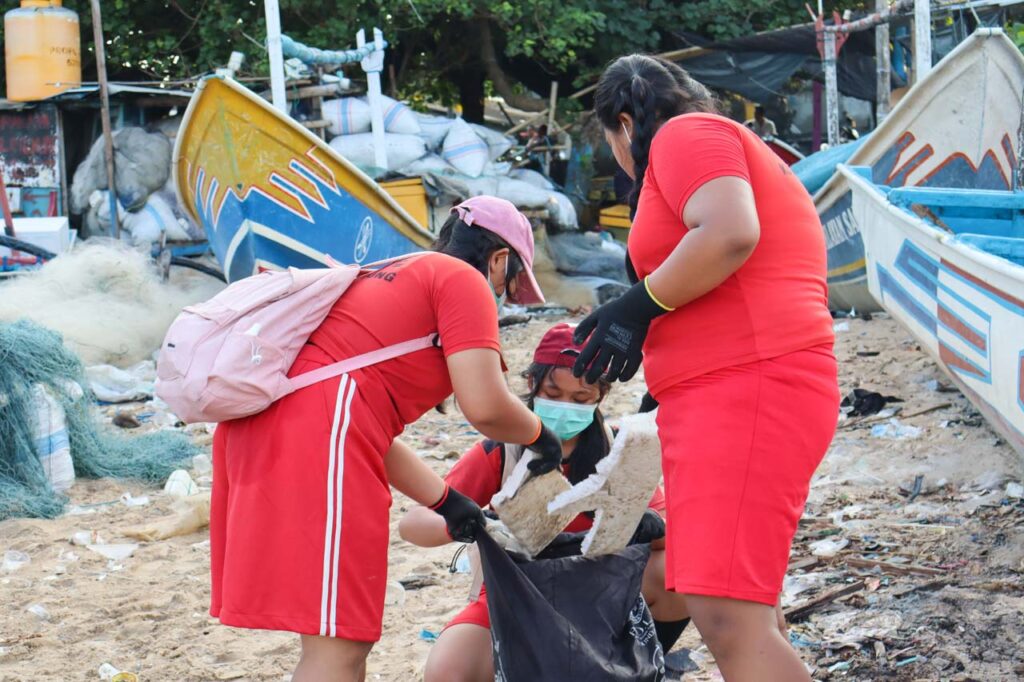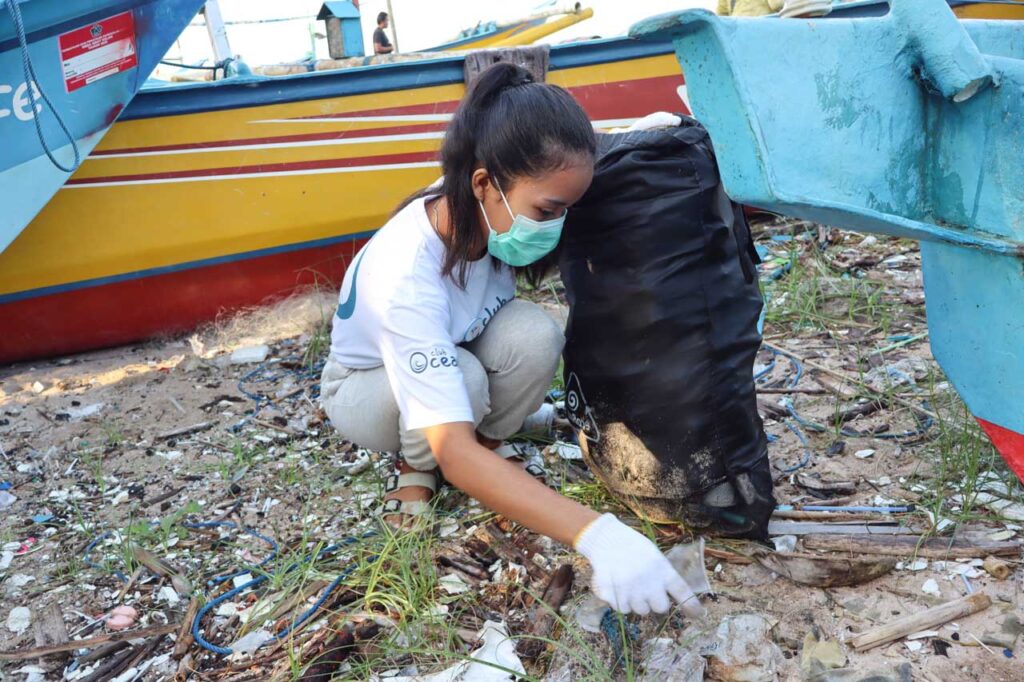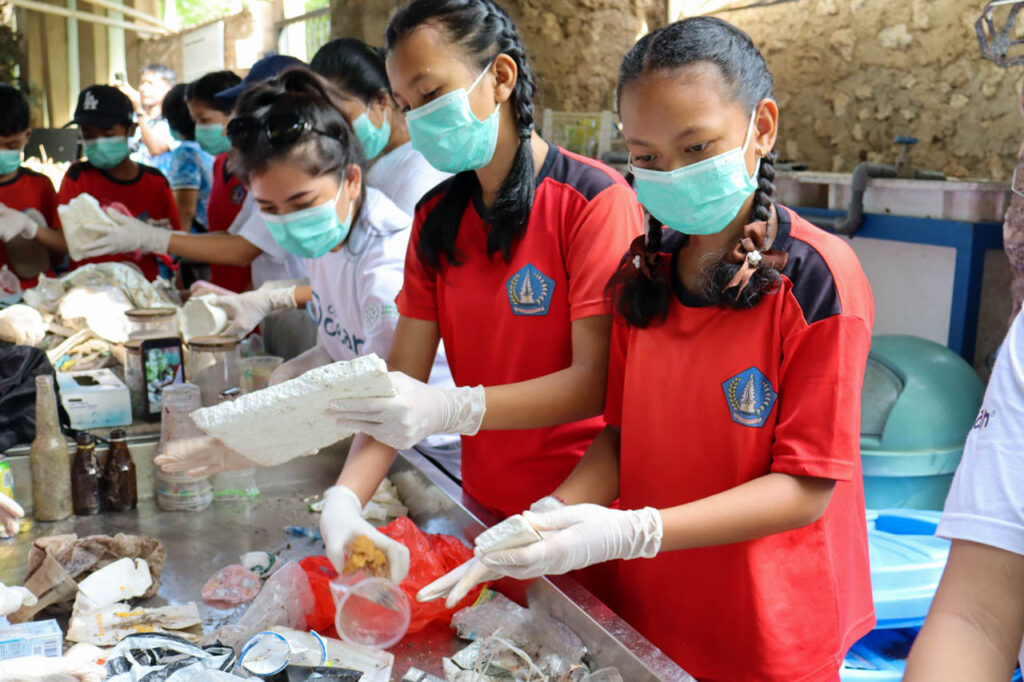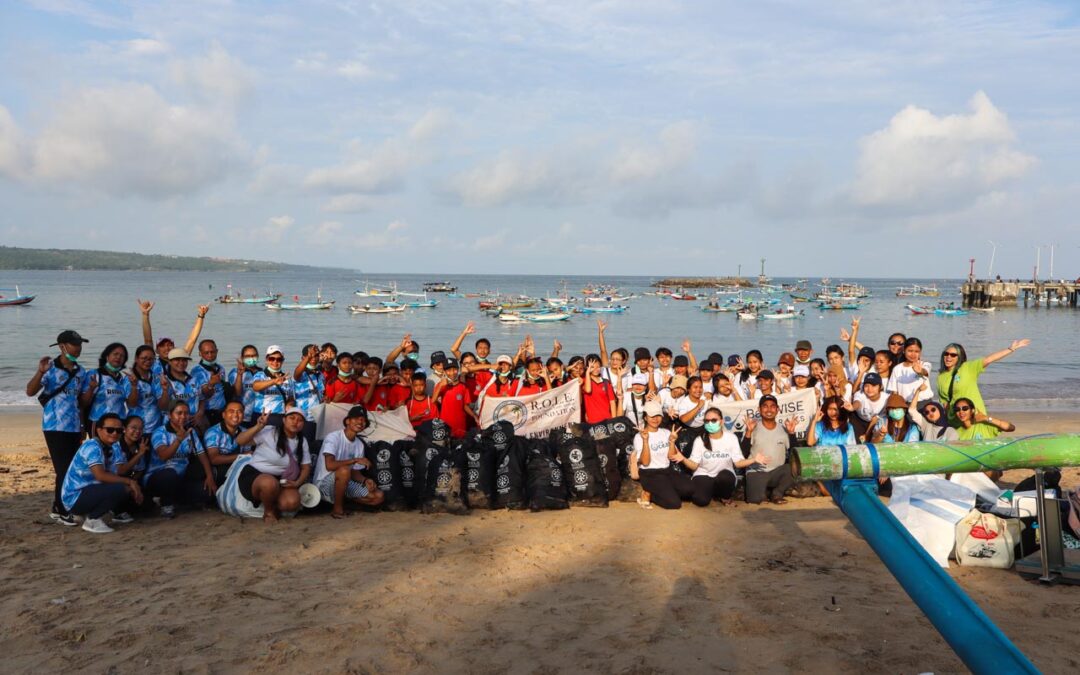On Saturday, April 19th, all staff of R.O.L.E. Foundation, Bali WISE students, 16 teachers and 20 sixth-grade students from SD 9 Jimbaran, along with volunteers, gathered at Kedonganan Beach in front of the fish market area to show appreciation for nature. A total of 77 people joined the beach cleanup, which began at 7:00 AM and concluded at 8:00 AM. Within just one hour, the team managed to collect 304.9 kilograms of inorganic waste, leaving a noticeable difference along the shoreline. This impactful effort not only improved the beach’s cleanliness but also served as a powerful reminder of the role we all play in protecting our environment. By setting this positive example, the team helped raise awareness among the local community about the importance of caring for our natural spaces.

Kedonganan Beach is one of the locations we frequently target for cleanups due to its persistent waste problem—largely influenced by the presence of the bustling fish market and daily human activity. By the end of the cleanup, the difference was clear: the shoreline looked significantly cleaner with 304.9 kilograms less waste. The majority of the waste collected consisted of residue (57%) and hard plastic (24%), reflecting the ongoing need for better waste management in the area.
Location and Condition of the Beach

Kedonganan Beach, located just south of Bali’s international airport, is known for its vibrant seafood market and stunning sunsets. A popular destination for both tourists and locals, the beach is frequented throughout the day by seafood lovers, beachgoers, and fishermen conducting their daily business.
However, this popularity comes with its own set of challenges. The constant foot traffic, combined with market waste and the effects of the tides, contributes to the accumulation of various types of debris. Items such as single-use plastics, discarded footwear, and ghost nets often make their way onto the shore. The beach’s role as both a tourist attraction and a functional hub for local fisheries creates a complex environment where waste management becomes an ongoing concern.
Efforts to clean Kedonganan Beach are about more than just aesthetics—they reflect a broader mission to protect marine life and foster a stronger sense of stewardship among community members and visitors alike. By addressing the waste issues, we aim to preserve Kedonganan as a clean and welcoming space for all who rely on and enjoy it.
Waste Collection and Separation

Kedonganan Beach is one of the locations we frequently target for cleanups due to its persistent waste problem—largely influenced by the presence of the bustling fish market and daily human activity. By the end of the cleanup, we had removed 304.9 kilograms of waste from the beach. The majority of the waste collected consisted of residue, totaling 176 kilograms or 57% of the overall waste. Hard plastic followed at 24%, highlighting the ongoing challenge of single-use plastic pollution in coastal areas. Among the most commonly found items were clear plastic cups, which alone weighed 30.05 kilograms—marking the highest amount ever recorded for this type of waste in R.O.L.E. Foundation’s cleanups since 2018. Styrofoam came in at 14.1 kilograms, both waste types closely linked to food packaging and the surrounding fish market activity. Glass bottles accounted for 17.2 kilograms, likely left behind by beach visitors, while shoes and slippers, totaling 14.5 kilograms, were likely brought in by the tide. One particularly alarming category was ghost nets, with 9.65 kilograms collected—dangerous remnants of fishing gear that pose a serious threat to marine life.
This cleanup effort not only removed harmful waste from the environment but also served as an important reminder of the role we all play in protecting Bali’s beaches. Through these regular actions, we hope to foster a stronger sense of responsibility among the local community, especially the younger generation, while continuing to safeguard the beauty and health of Kedonganan Beach.


Recent Comments